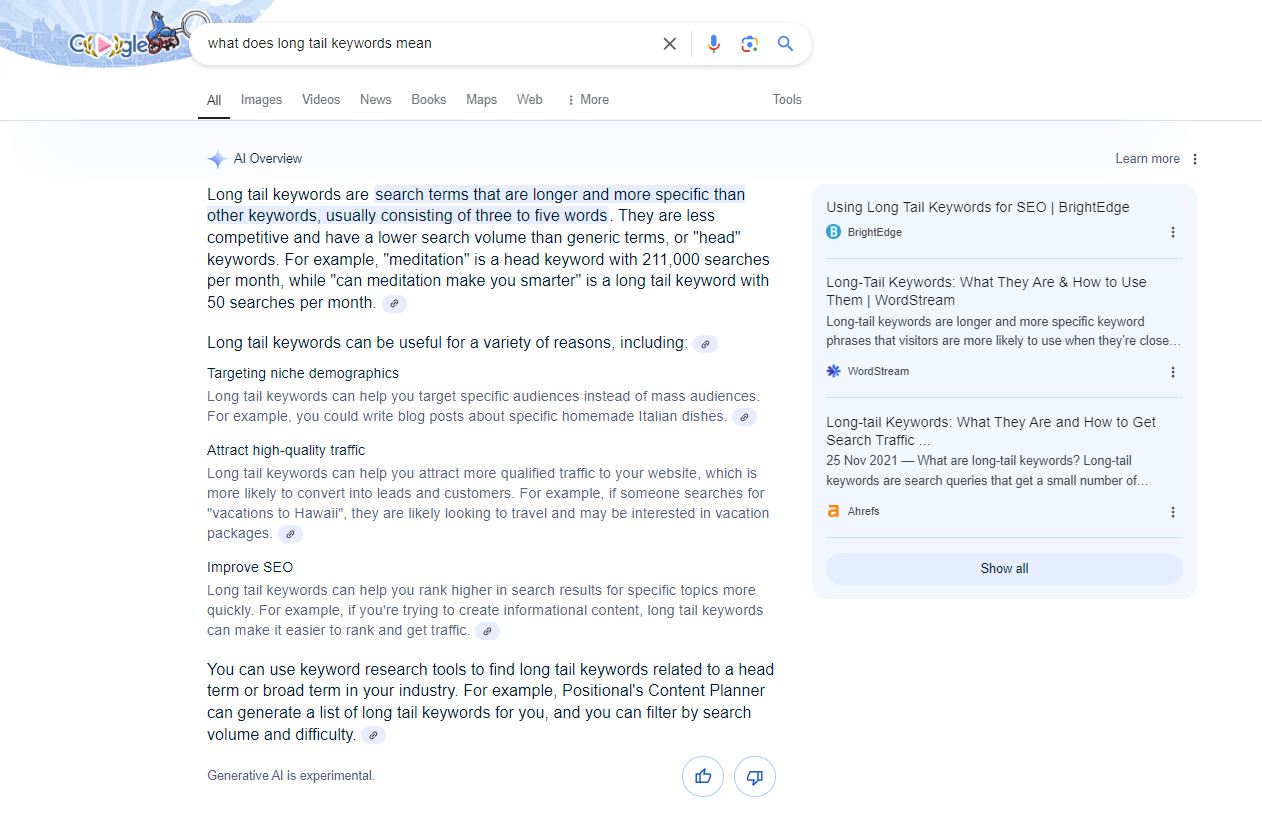The BRICS are expanding – here’s what you need to know
Explore the BRICS expansion and its global impact. Learn how six new members are reshaping international dynamics within the BRICS alliance.

On 15th August, Google announced that its AI Overviews (AIOs) Search feature is now available in local languages for users in the UK, Brazil, India, Indonesia, Japan, and Mexico. This feature had already been available in the US since May. We’ve noticed that AI Overviews are now showing up for many long-tail queries with five or more words.
Google also introduced several updates to this feature. For instance, here’s an example of the new layout for the search term ‘what does long tail keywords mean’ in the UK on desktop:

On the left side of the screen, you’ll find the AI-generated answer to the query. The right side displays a list of sources used to compile this answer. If you click the link icon next to any paragraph in the answer, the right-hand pane will show only the sources referenced in that specific part of the text. Notably, Positional’s Content Planner is mentioned as a tool for generating lists of long-tail keywords, with one of their guides cited as a source.
One immediate effect of this update might be fewer clicks to your website from long-tail queries in the affected markets. Google says that with AI Overviews, users are exploring more websites for complex questions. Additionally, clicks from search results with AI Overviews are said to be more valuable, as users tend to spend more time on those sites. We’re keeping a close eye on our clients’ analytics to see if this is accurate.
You may see a better ‘average position’ for long-tail terms in Google Search Console without a matching increase in clicks. This happens because all source links in an AI Overview are counted as having the same ‘position,’ with AIOs often appearing in position 1. This usually occurs if your link is visible right away or becomes visible as users scroll. Here’s a clearer explanation of how AI Overview performance is reported in Search Console:

The long-term impact of this rollout on publishers and brands is yet to be determined. AI Overviews seem to be part of Google’s strategy to keep users engaged within its ecosystem while they research. This could be a move to serve more ads or collect additional data to increase ad revenue when users are ready to make a purchase.
The good news is that the best practices for appearing in AIOs are now more aligned with achieving top rankings in standard search results. Initially, Google used results from outside the first page as sources for AIOs. However, a recent study by SeoClarity of 36,000 keywords shows that 99.5% of the time, at least one of the top 10 web results was used as an AIO source.
Providing a great brand experience and producing engaging, useful content remain essential. Today’s search landscape promotes your brand and content to where your audience is most active, even in unexpected ways. For example, in the first screenshot above, Google mentioned Positional’s Content Planner as a tool for creating long-tail keyword lists, with one of their guides used as a reference:
We’ve been studying AI Overviews and how to feature in them for over a year. Our recommendations for optimising your website aim to ensure prominence in this emerging feature as well. We’re helping brands establish authority on relevant topics and present information in an easily digestible format. We will keep a close eye on this feature and offer more guidance as necessary.
Oban International is the digital marketing agency specialising in international expansion.
Our LIME (Local In-Market Expert) Network provides up to date cultural input and insights from over 80 markets around the world, helping clients realise the best marketing opportunities and avoid the costliest mistakes.